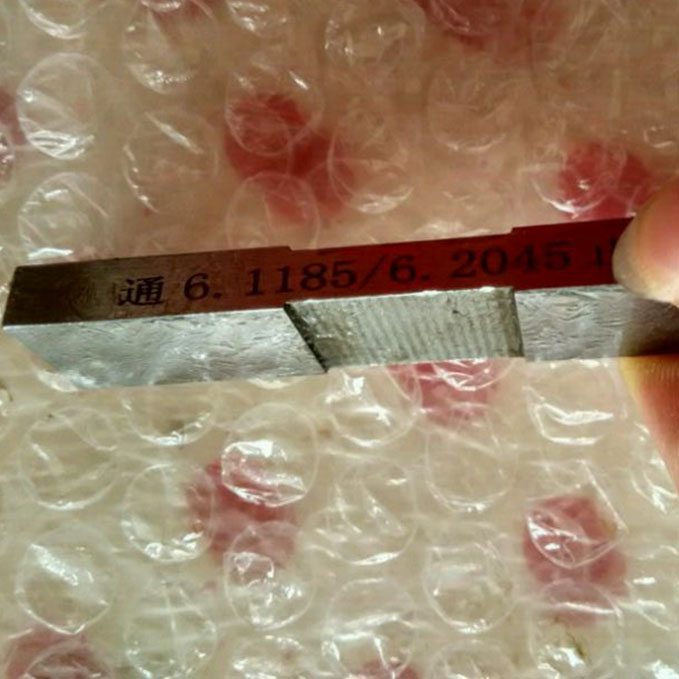Nov . 06, 2024 16:13 Back to list
Durable Stone Surface Plates for Precision Measurement and Quality Control
The Importance of Stone Surface Plates in Precision Engineering
In the world of precision engineering, accuracy and reliability are paramount. Among the myriad tools and instruments that contribute to the meticulous nature of this field, stone surface plates stand out as essential components. These flat, hard surfaces play a crucial role in providing a reference plane for inspection, measurement, and assembly processes.
What is a Stone Surface Plate?
A stone surface plate is a flat, rigid slab made from natural stone, typically granite or marble. These plates are ground to provide an exceptionally flat surface that can serve as a benchmark for various types of measurements. The fundamental characteristic of stone surface plates is their unparalleled stability and durability, making them ideal for use in precision shops, inspection rooms, and laboratories.
Characteristics and Advantages
One of the primary reasons for using stone surface plates is their exceptional flatness. The level of precision required in engineering can be affected by even the slightest deviations. A high-quality stone surface plate features flatness to within a few microns, ensuring that measurements taken are as accurate as possible.
Another significant advantage of stone surface plates is their durability. Unlike metal plates, which can warp or dent over time, stone plates are resistant to wear and tear. This longevity makes them a wise investment for businesses that rely heavily on precision measurements. Furthermore, stone is inherently non-magnetic, which eliminates any potential interference from magnetic fields, a crucial factor when measuring ferromagnetic materials.
Additionally, the thermal stability of stone surface plates ensures that they retain their properties under varying temperatures
. In many manufacturing and inspection environments, temperature fluctuations can influence measurements. Granite, in particular, has a low coefficient of thermal expansion, making it an ideal material for maintaining accuracy in diverse conditions.Applications in Engineering
stone surface plate

Stone surface plates find applications across various sectors, including manufacturing, aerospace, automotive, and research laboratories. These plates are primarily used for
1. Inspection and Measurement Engineers and quality control professionals use stone surface plates as a flat reference to measure the dimensions and features of parts and assemblies. This practice ensures that products meet specified tolerances and are free of defects.
2. Assembly In complex assembly processes, stone surface plates provide a stable base for assembling components, ensuring that parts fit together correctly. This stability is particularly vital in precision assemblies where any misalignment can lead to functional failures.
3. Calibration Precision instruments, such as micrometers and calipers, require calibration against a standard. Stone surface plates serve as a reliable reference for calibrating these tools, ensuring accurate measurements across various applications.
Maintenance and Care
To maximize their lifespan and maintain precision, stone surface plates require regular care. Keeping the surface clean and free from debris is crucial, as any particles can cause scratches or distortions. It is advisable to use soft cloths and non-abrasive cleaning agents to maintain the surface's integrity. Moreover, periodic inspections should be conducted to verify flatness and identify any potential wear or damage.
Conclusion
In summary, stone surface plates are indispensable in the realm of precision engineering. Their unmatched flatness, durability, and resistance to environmental factors make them ideal reference surfaces for measurement and assembly. As industries continue to prioritize accuracy and quality, the role of stone surface plates will remain critical. Investing in high-quality stone surface plates not only enhances measurement accuracy but also contributes to the overall efficiency and reliability of engineering processes. With proper care and maintenance, these invaluable tools will serve engineers and manufacturers for years to come, ensuring that precision remains at the forefront of technological advancement.
-
Why Metric Trapezoidal Thread is Ideal for Precision Motion ControlNewsAug.05,2025
-
The Unique Properties of a Block of Granite for Industrial UseNewsAug.05,2025
-
The Role of Flanged Y Strainers in Preventing Pipeline ClogsNewsAug.05,2025
-
The Importance of Regular Calibration for Master Ring GagesNewsAug.05,2025
-
How a Cast Iron Surface Table Enhances Accuracy in ManufacturingNewsAug.05,2025
-
Comparing Different Check Valve Types for Optimal Flow ControlNewsAug.05,2025
Related PRODUCTS









